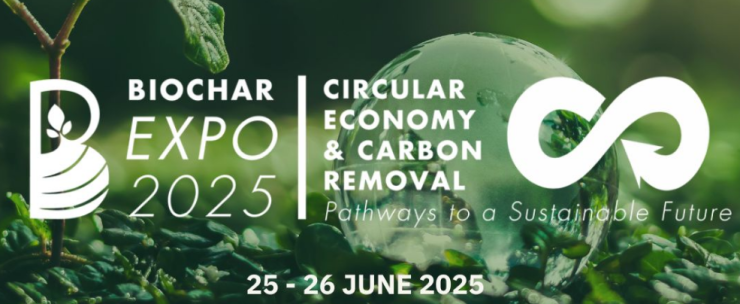ANZBIG expo 2025
Aug 31, 2025 -- Posted by :
Phil Steven reporting
Here's my brief take on the ANZBIG 2025 Expo in Gold Coast in late June (I attended online):
I'll start by noting that it's never easy to deliver a seamless conference experience to virtual attendees, but aside from a couple of minor hiccups I got to see and hear a wide variety of presentations and panels. A side benefit was the ability to have two sessions open simultaneously so that I could flick from one room to the other without leaving my seat or disturbing my fellow attendees. Well done to Don, Sam, Shaun, and the rest of the ANZBIG team who put in the hard yards to make this happen.
Highlights and items of interest
- 1. The keynote address was given by Tom Marrero, founder and CEO of Wakefield Biochar in the US, which has grown from a family startup in his brother Tony's garage to one of the country's fastest-growing private companies. Wakefield has become the dominant brand of biochar sold at retail in a large number of outlets, as well as a producer of blended soil and garden products. They also have significant bulk sales to agriculture and horticulture markets, with a target of providing an alternative to products like perlite and peat moss.
- 2.Annette Cowie (Univ of New England, NSW Dept of Primary Industries) gave an overview of her work with the IPCC on the sequestration value of biochar. There is recent research suggesting that biochar carbon removals are comparable in durability to coal deposits, and the international validation frameworks are likely to take note of this.
- 3. Stephen Joseph (Univ of Western Sydney) provided a briefing on the global state of biochar production and application. The growth rate in the past five years is exponential, with an estimated 8x increase from 2023 to the current year estimate of 2.7 million tonnes. This does not include China, which accounts for another 500-700k tonnes annually and growing at a similar rate. He mentioned the role of mobile pyrolysis in mitigating environmental hazards in a number of countries and included a shout-out to New Zealand company BiocharTP and its air curtain burner technology, and stressed the need for standards to provide assurance to high-value markets on the quality and fitness for purpose of biochar products.
- 4. Dave Simmons (Hiway Group) shared real-world performance stats on their recycled pavement material incorporating biochar in a highway project in Western Australia, now at two years since deployment. The project came in at a net 54 T CO2e negative emissions, and the pavement blend outperforms a standard asphalt roading treatment in several important measurements, notably elasticity and resistance to fatigue. Dave says that one km of road can use 50 m3 of biochar, so this represents a potentially massive demand.
- 5. Stuart Larsson (SOFT Agriculture/Mara Seeds) talked about a range of farming applications including animal feeding. One of the targets of their research is ruminant methane emissions reductions as measured in vivo and they have built live animal measuring chambers to further this goal. Stuart did mention that one trial had to be cut short when some of the replacement heifers who were being fed biochar got too big to fit in their chambers.
- 6. Lukas Van Zwieten (NSW Dept of Primary Industries) told us about the problem of controlled-release N fertilisers, many of which use plastic coatings to slow the mobility of soluble nutrients and how these products are set to be banned in many international markets in an effort to curb microplastic pollution. Fertiliser manufacturers will need another means of limiting the rate of release in the root zone of growing crops, and biochar has the potential to become a substrate for next generation blends that optimise delivery and minimise leaching.
- 7. Jack Benetto (Biocare) gave a high-level summary of the international voluntary carbon markets. He noted that current demand for CDR instruments outstrips supply by as much as 3x, and that delivery of CDR units is only 5% of the quantity sold. This underscores the need for a lot more industrial production to come online, not only to make up the backlog but to cope with projected growth in demand.
We also got a detailed presentation from Morten Heick from Pyrolysis Denmark, who missed out on attending in person thanks to the hostilities in Iran at the time his flight was scheduled. I'll do a detailed summary of what he told us in another article, because it's a good story on its own.
